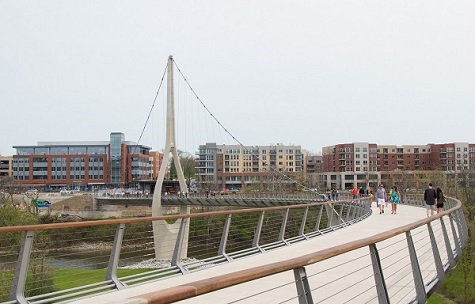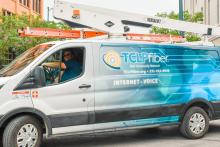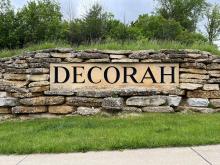
The city of Dublin, Ohio has struck a public private partnership with altafiber (formerly known as Cincinnati Bell) to build a new citywide fiber network city leaders hope will finally deliver the kind of affordable, next-generation broadband access Dublin’s 50,000 residents have long been clamoring for.
In 2022 the city issued a request for proposal (RFP) looking for a partner on a citywide network build. At a June 26 meeting, the Dublin city council voted unanimously to select altafiber from a roster of seven potential applicants.
According to the arrangement, construction of the city network is expected to begin in Spring of 2024, with every premise in Dublin passed by a 10 gigabit per second (Gbps) capable network within three years. A select number of undetermined customers are expected to be brought online sometime in the latter part of next year, officials tell ILSR.
A city press release notes that altafiber will invest $35 million in the fiber network, as well as potentially providing the infrastructure necessary to help the city support either public Wi-Fi initiatives or a City Innovation Center. The city says it will pay about $6 million to bury the necessary fiber infrastructure citywide.

“We are committed to offering outstanding amenities for our residents,” Dublin City Manager Megan O’Callaghan said of the proposal. “This project will provide unprecedented access and help us achieve Dublin City Council’s goal of being the most connected city. We’re looking forward to working with altafiber to achieve this together.”
altafiber has been striking a series of similar arrangements across Ohio with cities that, for various reasons, aren’t logistically or financially comfortable with the challenge of building a fiber network alone. That includes a $100 million proposal aimed at delivering gigabit fiber to Butler County, Ohio’s 150,000 single-family residences.
As ILSR has noted, public private partnerships (P3) are not inherently less risky than municipal broadband builds, and can come with notable downsides if the municipality does not maintain control over the trajectory, future, and pricing of the finished network.

“We evaluated various options, but the City of Dublin does not wish to operate a residential fiber network,” city spokesperson Lindsay Weisenauer told ILSR when asked why the city selected a P3 over a municipal build. Once completed, Weisenauer told ILSR that altafiber will own the completed network, whose total cost is estimated to be $45 million.
“The initial capital investment by altafiber to build the backbone fiber network covered under the agreement is $35 million, which includes the $7.1 million noted previously,” Weisenauer said. “The remaining $10 million is the required success based capital to extend fiber into the individual residential and business locations.”
Dublin had already constructed its own DubLINK network, which currently provides 100 gigabit per second (Gbps) fiber optic connectivity to Dublin-area businesses. That effort began in 1999 as a public private partnership with the Fishel company to build an institutional network; later dramatically expanded with the help of Columbus FiberNet and the Ohio Academic Resources Network (OARnet).
“The initial contribution amount by the City of Dublin is $5.9 million," Weisenauer said. “With the potential to invest an additional $1,200,000 if altafiber accrues additional costs due to utilizing the DubLINK fiber conduit system, which is required by the city. Total potential costs to the city are capped at $7,100,000.”
When completed, the fully integrated network will be one of the largest fiber networks in Ohio.
“altafiber is proud to partner with the City of Dublin on this important project,” Jason Praeter, President of Consumer & Small Business for altafiber said of the deal. “Access to employment, educational, and healthcare opportunities depends on gigabit connectivity – which is a powerful economic development tool.”
A Long Overdue Fix For High Prices, Limited Competition
Like so many U.S. communities, Dublin, Ohio residents have long been frustrated by the lack of meaningful broadband options. Competition in the city has for years been dominated by AT&T and Charter (Spectrum), whose regional duopoly results in slow speeds, patchy access, and substandard customer service.
Several Ohio communities, such as Hudson, Ohio, 15 miles north of Akron, have taken matters into their own hands to directly build city-owned and operated municipal broadband networks. Such efforts routinely attract the attention of regional monopolies who often use misleading PR campaigns to mislead locals and undermine municipal efforts, as we have seen recently in Utah and Maine.

A 2022 survey conducted by Dublin indicated that 58 percent of Dublin residents believed that investing in broadband should be a high priority for the city. While 15 percent of those surveyed indicated that broadband investment should be the city’s highest priority.
atlafiber’s existing promotional plans in other markets include a symmetrical 400 megabit per second (Mbps) tier for $40 a month, a symmetrical 600 Mbps per second tier for $50 a month, and a symmetrical gigabit plan for $60 a month. Though Dublin officials say they haven’t settled on the rates local Dublin residents will see.
“altafiber will provide mass market introductory rate packages that are the same or better to what altafiber currently offers to consumers in the State of Ohio,” Weisenauer said.
Combined with discounts provided by the FCC’s Affordable Connectivity Program (which provides enrolled participants $30 off montly broadband bills for however long the program funding lasts), Dublin city leaders are hopeful the new options are a boon to the city’s lower-income populations struggling to gain access to remote health care, education, and employment opportunities.
"Low-income folks live all over Franklin County," Stephanie Hightower, executive director of Columbus Urban League told the Columbus Dispatch. "There are still populations in Dublin where people are working minimum wage jobs and on food stamps and public assistance. So kudos to Dublin for doing this.”
"You don't want our children out behind big box stores or restaurants and other places to get access at 10 or 11 o'clock at night. This is not about an amenity. It should be a requirement that everybody has, no matter what your zip code is."
State efforts to shore up access to underserved and unserved households have been a decidedly mixed bag. In 2021, state Republican leaders attempted to ban community owned and operated networks entirely, but backed off the effort after widespread public backlash to the proposal, which was inserted into a state budget bill without prior public discussion.
Ohio is soon expected to receive more than $794 million in new broadband subsidies from the Broadband Equity, Access, and Deployment (BEAD) Program courtesy of the recently passed infrastructure bill.
(For more on the history of Dublin's foray into fiber, here is a throwback 2017 episode of the Community Broadband Bits podcast in which ILSR CBN Director Christopher Mitchell interviews Dublin's previous city manager Dana McDaniel about how the city's initial fiber investment boosted economic development and was fueled by a vision of becoming an "intelligent community.")
Header image of Chief Leatherlips Monument in Dublin, Ohio courtesy of Wikimedia Commons, Attribution 2.0 Generic (CC BY 2.0)
Image of Dublin City Hall courtesy of Wikimedia Commons, Attribution-ShareAlike 4.0 International (CC BY-SA 4.0)
Image of Dublin, Ohio map courtesy of Wikimedia Commons, Attribution-ShareAlike 3.0 Unported (CC BY-SA 3.0)
Inline image of the Dublin Link in Dublin, Ohio courtesy of Wikimedia Commons, Attribution-ShareAlike 4.0 International (CC BY-SA 4.0)







